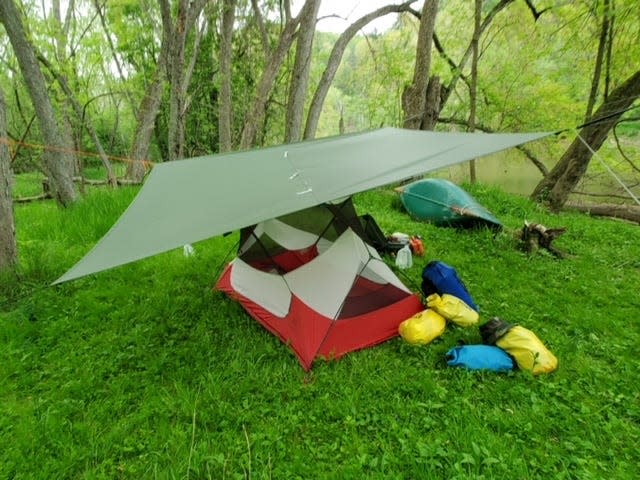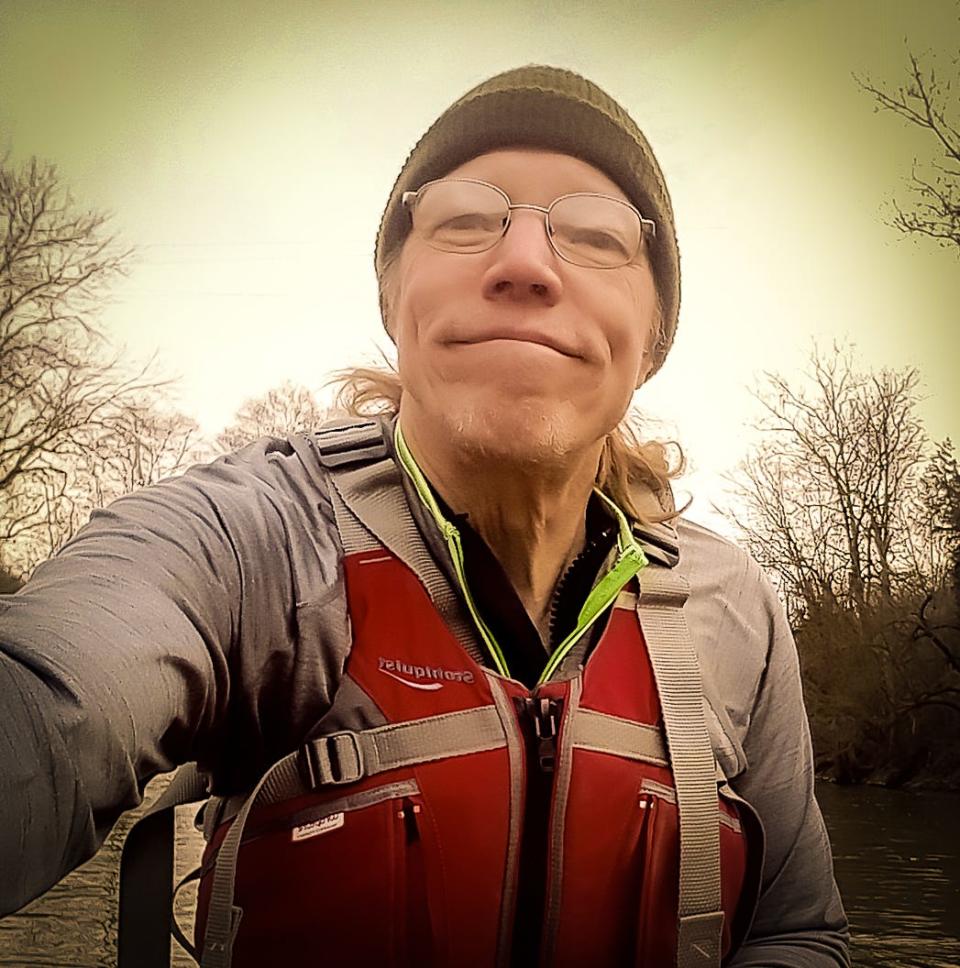Compensation for condensation — how to avoid turning your tent into a terrarium
Remember when you were a kid and you’d play camping by draping blankets over the backs of chairs? I still do that. More or less.
I used to make fun of campmates who did their own version of play camping. They’d start with a basic tent — generally an old one that had been used and abused and leaked like a sieve. They’d suspend a tarp above the tent to keep rain off it, which seemed like a weird concept.
More: Coffee cup voices make good sense when braving rain, camping at the Mohican

After all, what’s the point of having a tent if it doesn’t keep you dry?
My tents have always kept the rain off, even when my campmates’ tents failed. I buy the best tents I can afford. Even if I can’t actually afford them. To me, it’s worth risking bankruptcy or doing without food for a few months to stay dry on camping trips.
However, in high-humidity situations, your tent might not keep you entirely dry. Condensation from your own breath accumulates on the underside of the roof and drips down on you and your sleeping bag. It’s usually not enough to soak you, just enough to make you uncomfortable. Especially when it’s cold out.

So I read up on ways to prevent — or at least minimize — condensation inside a tent.
A lot of the online articles I read touted the virtues of ventilation. It’s not just a matter of choosing a tent designed for maximum air flow; it also helps to maximize the space around you in your sleeping quarters. Some articles recommend keeping your gear outside the confines of the tent. Which works well for me since I canoe camp and keep my stuff in drybags anyway.
So, I bought a high-end tent with plenty of screen material on the sidewalls and extra vents on the rainfly. It also features doors on both sides with vestibules. To maximize interior space, I went from a solo tent to a two-person model, upgrading from my MSR Hubba to the Hubba Hubba.
Gotta love a good double entendre and MSR’s sense of humor. Actually, “hubba” refers to the hub concept used for the pole system. The tent poles are permanently connected to hubs with shock cords, making them one unit and extremely easy to set up and take down. Besides, with fewer poles there’s less chance of losing one.
Regardless, when I found myself camping in high-humidity situations, condensation was still an issue. It wasn’t as bad as it had been, but it was annoying. (It takes a lot less to annoy you when you’re old and grumpy.)
So, I’ve regressed to “play camping.” Not quite draping a blanket over the backs of chairs, mind you. But close. On my last canoe trip, I strung a nylon rain tarp over my Hubba Hubba.
More: Vintage paddle and sage advice inspire winter canoe trip on the Mohican River
As mentioned in a previous column, the pitter patter of an all-night rain turned into a downpour that sounded like a continuous drumroll.
With plenty of air circulation between my tent and the tarp, condensation was not an issue. But my own negligence was. Toward daybreak I noticed a few droplets of moisture on my sleeping bag. Then I noticed the drips were in a straight line — directly beneath a seam in the tarp.
It’s a high-quality tarp, one I bought about 15 years ago for Algonquin canoe trips. I never got around to sealing the seam that runs through the middle of it. There was no need to. Over the years, the tarp weathered the worst rains Canada could dish out and kept my friends and me dry when we hung out underneath it.
Even the best camping gear doesn’t last forever. (Except my Moss tent, which is still going strong after more than 30 years.)
So, for my next round of “play camping,” I’ll seal the seam. If that doesn’t work, I’ll replace the tarp.
Or grab a blanket and some chairs and camp in the comfort of my living room.
This article originally appeared on Ashland Times Gazette: 'Play camping' can help keep tent dry

